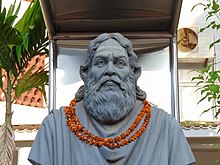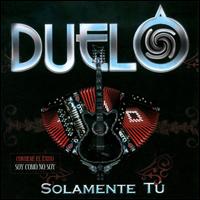패틸(제목)
Patil (title)파틸(Patil, "마을의 우두머리"라는 뜻)[1][2]은 인도의 성이고 제목이나 성이다. 호칭의 여성 변종은 패틀린 또는 패틀린바이(Patlinbai)이며, 패틸의 아내를 묘사할 때에도 사용된다.
고대에는 파틸이 데스무크 밑에서 일하던 마을의 우두머리였는데, 데스무크(Deshmukh)는 그 지역의 우두머리였다. 데칸 술탄트, 그리고 마라타 제국의 통치하에 파틸은 마을의 우두머리였고 마을의 가장 중요한 바탄다르였다.[1] 그의 주된 임무는 경찰과 사법부의 수장이 되는 것뿐만 아니라 세입 수집가가 되는 것이었다.[3]
콘칸에서는 파틸을 "Khot"이라고 불렀다. 역사학자 네스는 "파틸과 쿨카르니가 마을에, 데쉬무크나 데쉬판데가 그 지역, 즉 파르가나에 있었던 것"이라고 쓰고 있다.[4]
파틸은 마을들을 정착시키고 마을 사람들로부터 수입을 거둬들였고, 따라서 파틸 가족은 전형적으로 마을 토지의 80-90퍼센트를 소유했다. 여러 마을을 식민지화하면서 파틸 한 곳을 데스묵으로 승격시켰다. 파틸은 마을 농부들과 장인들로부터 몇 가지 무료 서비스를 받을 자격이 있었다. 파틸은 다사라, 디왈리, 홀리 등 모든 마을 축제를 주관했다.[5] 마하라슈트라에서는 파틸 와탄은 마라타 카스트나 쿤비 카스트에 의해 지배되었지만, 이 관직을 차지한 브라만과 무슬림도 있었다.[6] 이 와탄은 왕이 구입했거나 허가한 것이다.[7]
마라타 제국의 몇몇 중요한 인물들의 조상들은 마하라슈트라에 있는 마을에 대한 세습적인 파틸키 권리를 가지고 있었다. 시바지의 가족은 오늘날 푸네 지구에서 파틸키 권리를 가지고 있었다.[8][better source needed] 그왈리오의 신데 통치자들의 조상들은 사타라 지구의 칸헤르케드 마을에서 비슷한 권리를 가지고 있었다.[9] 마찬가지로 사르다르 비탈 사다시브 빈추르카르(다니)는 찬드와드 파르가나에 있는 빈추르 마을의 파틸키(Patilki)를 붙잡았다. [10]
파틸스의 대다수는 빈추르카르족(다니족), 푸란다레스족, 삼브라니스족, 툴시바그왈레스족 등 데샤사 브라만족을 제외하고는 문맹(대학 학위 면에서)이었다. [11][12][13][14][15][16][17] 따라서 서신은 파틸과 쿨카니라는 이름으로 운반될 것이고 그들은 모든 정부 문서에 공동으로 서명할 것이다. 파틸은 일반적으로 그의 지문이나 다른 자국을 문서에 붙이곤 했다. 쿨카르니 족은 때때로 파틸 족의 문맹을 이용하여 "그 사람을 도구로 사용"하곤 했다. 사회 개혁가인 콜하푸르의 샤후 마하라즈(Shahu Maharaj)는 파틸이 쿨카르니에 의존하는 것을 종식시키기로 결정했다. 1912년 5월 15일, 그는 "파틸 스쿨"이라는 학교를 설립하여 미래의 파틸스가 마을 장교로서 임무를 수행하도록 훈련시켰다. 이 학교는 7년 동안 운영되었다. 고칼레 정치경제연구소는 1955년 파틸경찰이 평소 문맹자는 아니었지만 최소한 4학년까지 교육을 받도록 의무화했다고 평했다.[15][16][17]
참고 항목
메모들
- ^ a b Rachel Sturman (29 June 2012). The Government of Social Life in Colonial India: Liberalism, Religious Law, and Women's Rights. Cambridge University Press. p. 53. ISBN 978-1-107-01037-6.
These were the district head (deshmukh), district accountant (deshpande), village headman (patil), village accountant (kulkarni) and village menial (mahar)
- ^ Jennifer Marie Bayer; Central Institute of Indian Languages (1983). To greater heights: faculty research of CIIL, 1969-1979. Central Institute of Indian Languages. p. 506.
The village chief is called Karbhari in Marathi. There is another word viz., patil for village chief. Mr. Sarwate and Gujarati translator Mr. Vidvansa have translated this Karbhari word as 'patel' which is equivalent of Marathi word 'patil'.
- ^ Deshpande, Arvind M. (1987). John Briggs in Maharashtra: A Study of District Administration Under Early British Rule. Mittal Publications. p. 118.
- ^ Brenda Joseph Ness (2004). "The Saturday Oil-pressers: The Bene Israel in the Konkan". In Roger D. Long (ed.). Charisma and Commitment in South Asian History: Essays Presented to Stanley Wolpert. Orient Blackswan. p. 100. ISBN 978-81-250-2641-9.
- ^ Gordon, Stewart (February 2007). The Marathas 1600-1818, Volume 2. Cambridge University Press. p. 23. ISBN 978-0521033169.
- ^ 1925년 S. 센. 마라타스의 행정 시스템. 캘커타 대학교, 캘커타. 216페이지[1]
- ^ Kulkarni, R.A (1969). Maharashtra in the Age of Shivaji. R.J. Deshmukh. p. 32. Retrieved 2 April 2018.
We come across some Brahmin Patil as well. It was mainly due to the purchase of a Patilki watan or grant of such a watan by the king.
- ^ Prof. A. R. Kulkarni (1 July 2008). The Marathas. Diamond Publications. pp. 8–. ISBN 978-81-8483-073-6.
- ^ N. G. Rathod (1994). The Great Maratha Mahadaji Scindia. Sarup & Sons. pp. 1–. ISBN 978-81-85431-52-9.
- ^ Vinchoorkar, S. R. A brief History of the Vinchoorkar Family. Arya Bhusltana Press, Pune. p. 42.
When he had occasion to stay in the Deccan, Holkar fixed his residence at Chandwnd; for before he was Holkar. he had been the Deshmnkh of Chandwad. As Vinchoor formed a part of Chandwad, the honour of being a Patil thereof was claimed by Vithal Shivdev.
- ^ Lila T. Patil (1970). The evolution and growth patterns of international trade. World Press. p. 77.
Their family surname is really Sambrani and the unusual surname of Patil, unusual for Deshastha Brahmins, comes from the Patilki of Mugadh village near Dharwar City
- ^ Vinchurkar, S.R. A Brief Story of the Vinchurkar family. Arya Bhushana Press, Pune. p. 1.
They were originally Danis of Saswada doing duty as recorders of grain and accepting a portion of the same as their Kulkarni Vatan.
- ^ Hatekar, Neeraj. "'Economic Backwardness' in History Deviation from a Eurocentric Theme" (PDF). IRIS Knowledge Foundation. Department of Economics, University of Mumbai, Mumbai: 15, 16. Retrieved 2 April 2018.
The Patilki of Kokamthan was held by four co-sharers. One of them wished to sell it, probably because he could not pay the govt. revenue due to him. Abaji Purandare agreed to buy it for Rs.5000, assuming it to be free of other encumbrances......The villagers approached Naro Appaji Tulshibagwale, who agreed to buy the Patilki for Rs.5000.00 and pay the villagers Rs.2960. Note that Naro Appaji Tulshibagwale and Abaji Purandare were Deshastha Brahmins.
- ^ Vinchoorkar, S. R. A brief History of the Vinchoorkar Family. Arya Bhusltana Press, Pune. p. 42.
When he had occasion to stay in the Deccan, Holkar fixed his residence at Chandwnd; for before he was Holkar. he had been the Deshmukh of Chandwad. As Vinchoor fOrmed a part of Chandwad, the honour of being a Patil thereof was claimed by Vithal Shivdev.
- ^ a b Trimbaka Nārāyaṇa Ātre (2000). The village cart: translation of T.N. Atre's Gaav gada. p. 78.
As most patils are illiterate the entire correspondence of a village is conducted in the joint name of the patil-kulkarni and both these officials are required to sign all government papers ( an illiterate Patil puts down his thumb impression or other mark).
- ^ a b N. V. Sovani; Kumudini Dandekar (1955). Fertility Survey of Nasik, Kolaba and Satara (North) Districts. Gokhale Institute of Politics and Economics. p. 62.
The Police Patil, a village officer, is responsible for the vital registration. Though at present there is a regulation that the Police Patil should be educated up to at least the 4th vernacular standard, he was not always a literate person before.
- ^ a b Dhananjay Keer (1976). Shahu Chhatrapati: A Royal Revolutionary. p. 216.
He declared on February 21,912 that he would start in commemoration at the Imperial Coronation Darbar at Delhi, a special school called the Delhi Darbar Memorial Patil School, to train the Patil's sons for the duties of village officers and improve the quality of their work. The names of the candidates were called till may 15, 1912, on which date the school was started. The students were not charged fees for the first year. The school was sometimes mentioned as the Patil school or the Delhi Durbar Patil School. The Patils formed an important class of hereditary village officers. They were mostly illiterate, ignorant and unable to do their duties properly. To make the Patil independent of the Kulkarni, who always took advantage of his illiteracy and used the Patil as a tool, special subjects were taught in the school (1)revenue (2)criminal work (3)village accounts (4)sanitation. The school seems to have run for about seven years


